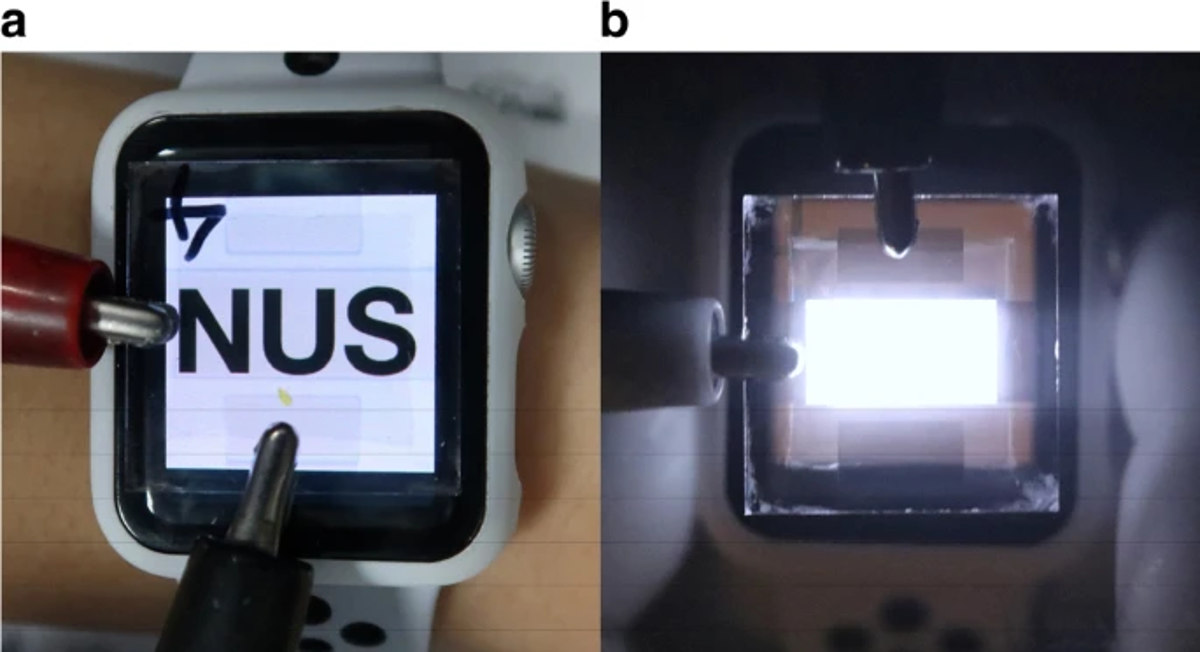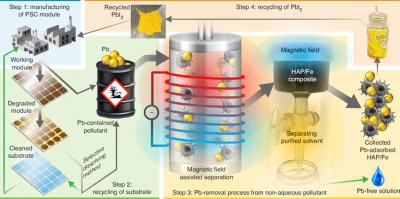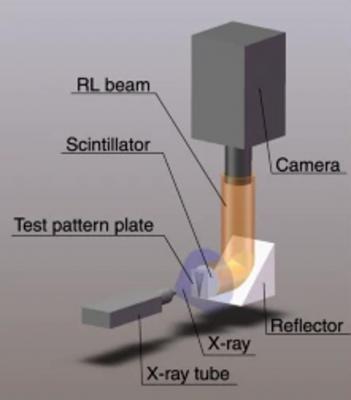NUS team demonstrates transparent near-infrared perovskite light-emitting diodes
NUS researchers have developed transparent, near-infrared perovskite light-emitting diodes (LEDs) that could be integrated into the displays of smart watches, smart phones and augmented or virtual reality devices.
 a A transparent PeLED overlaid across a smart-watch display to show high optical transparency and neutral color. b Near-infrared photo showing bright NIR electroluminescence from the transparent PeLED above the smart-watch display. Image from article
a A transparent PeLED overlaid across a smart-watch display to show high optical transparency and neutral color. b Near-infrared photo showing bright NIR electroluminescence from the transparent PeLED above the smart-watch display. Image from article
These transparent devices are constructed with an ITO/AZO/PEIE/FAPbI3/poly-TPD/MoO3/Al/ITO/Ag/ITO architecture, and offer a high average transmittance of more than 55% across the visible spectral region.

